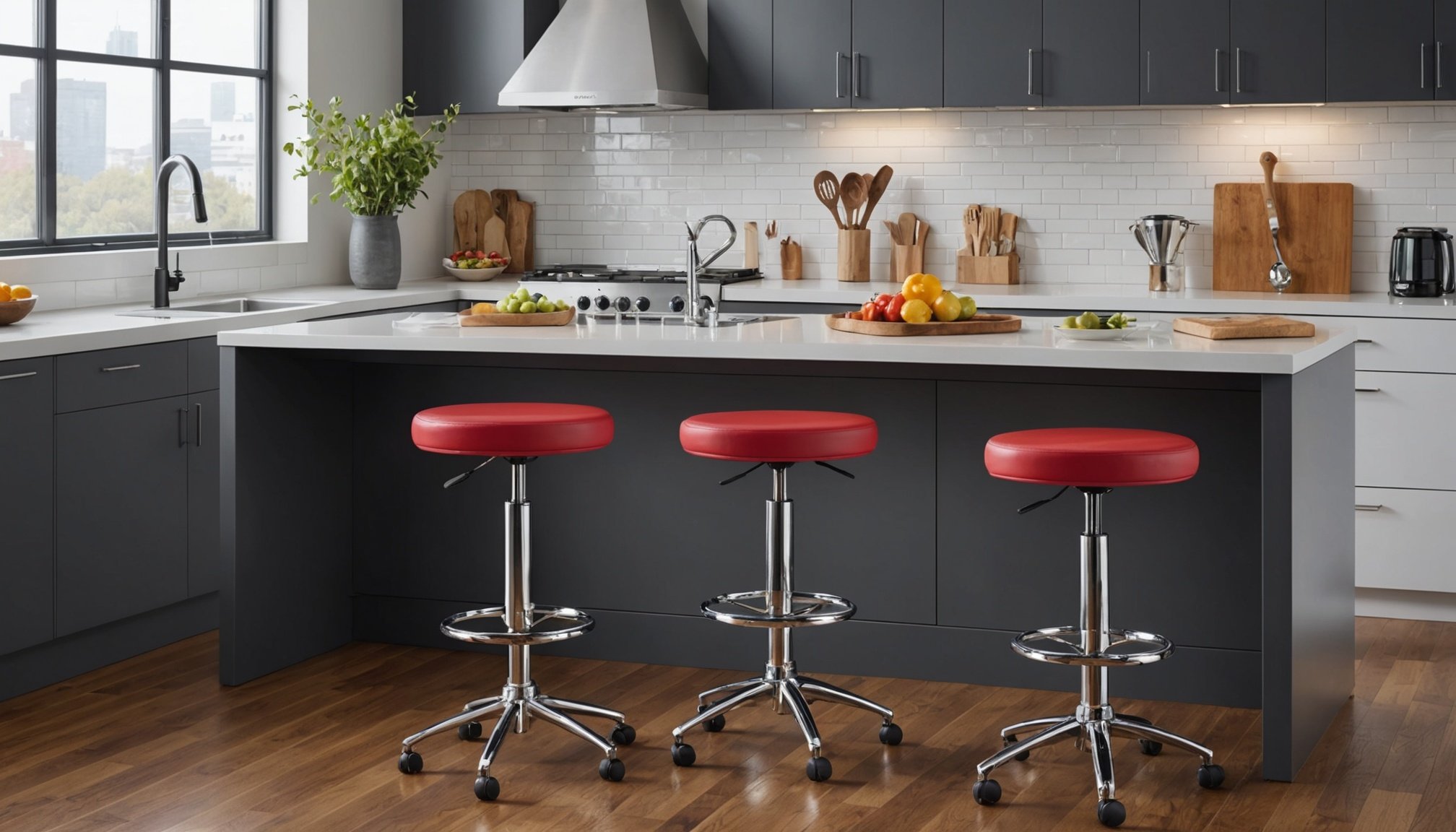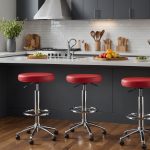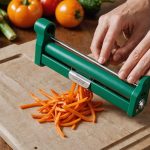Key Ergonomic Features of Kitchen Stools
When exploring ergonomic kitchen stools, several features are pivotal for enhancing comfort and health. One of the essential factors is height adjustability, which allows users to customize the stool to their specific needs, increasing comfort and supporting proper posture. This adjustability not only caters to various counter heights but also accommodates individuals of different statures, making it a vital feature for any kitchen stool.
Posture support is significantly influenced by lumbar support, which assists in maintaining healthy spinal alignment. Proper lumbar support can help reduce strain on the lower back, promoting better posture and reducing fatigue during prolonged use. Paired with suitable lumbar support, the stool should also offer an adequate seat depth, which can impact overall seating posture. A seat that is too deep may cause users to lean forward, stressing the spine, while a seat that’s too shallow can lead to discomfort.
Also to read : Best Kitchen Ceiling Materials to Minimize Dust and Enhance Cleanliness
Finally, the inclusion of footrests can greatly benefit digestion improvement by encouraging proper seated posture. By ensuring feet are adequately supported, stools promote healthier seating angles, enhancing the user’s overall comfort and contributing to better digestive health.
Enhancing Posture Through Design
Exploring the design of kitchen stools involves understanding the key components that contribute to posture enhancement. A stool’s design directly impacts spinal alignment and overall seating comfort.
Also to read : Ultimate Meal Planning Mastery: Your All-Inclusive Guide to Creating a Seamless Kitchen Hub for Optimal Dietary Success
Relationship Between Stool Height and Posture
Stool height plays a critical role in maintaining proper posture. An adjustable height feature is essential, as it allows users to set the seat at a level that aligns their knees with their hips. This alignment is crucial for supporting the natural curve of the spine and ensuring postural integrity. Without the right height, users might experience unnecessary strain on their backs or legs, influencing their long-term comfort.
Design Features Supporting Spinal Alignment
In addition to height, the inclusion of features such as ergonomic backrests can significantly aid in spinal alignment. These backrests should curve naturally to match the spine’s contours, providing consistent support throughout the lower back. By doing so, stools can ensure that users maintain a healthy seated posture for extended periods.
Best Materials for Long-Term Comfort
Finally, the choice of materials can also impact the longevity and comfort of a stool. Cushioned seats with breathable fabric allow for prolonged seating comfort, while durable frames help maintain the stool’s structural integrity over time. Prioritizing these materials can enhance the user’s ergonomic experience, making these considerations vital in stool selection.
The Connection Between Seating and Digestion
Understanding the link between seating posture and digestion support is crucial in selecting the right kitchen stool. Poor posture, often resulting from inadequate stool design, can negatively affect digestive health. When seated improperly, pressure on the abdomen may lead to discomfort and slow digestion, making proper posture essential for maintaining digestive harmony.
The shape of the seat plays a pivotal role in promoting a healthy digestive position. A well-designed seat can encourage users to sit upright, aligning the stomach in an optimal position for efficient digestion. Stools with a slight forward tilt or contoured seats naturally guide the body into a posture beneficial for digestive processes.
For those prioritising digestive comfort, selecting stools designed with seated posture benefits in mind is advisable. Recommendations include choosing stools with a gently sloped seat or an adjustable angle feature to accommodate different body types. Such designs not only enhance comfort but also support the digestive system by fostering the right seating position. Making considered choices with stool design can lead to improved overall well-being, demonstrating how ergonomics can extend beyond basic seating comfort to impact essential physiological functions.
Product Comparisons and Recommendations
Selecting the perfect kitchen stool involves examining various product features and seeking the best ergonomic design. Comparing options ensures you find the most suitable stool for comfort and utility.
Top Ergonomic Stools on the Market
Investigating kitchen stool recommendations highlights brands committed to posture support. Look for stools with adjustable height and lumbar support as they offer customized comfort. Top ergonomic stools provide features that align with individual needs, making them appealing for long-term use.
Feature Comparisons: What to Look For
When comparing features, consider the materials used, like durable frames and cushioned seats, enhancing seating comfort over time. Footrests and adjustability factors also weigh in, presenting a complete package for postural support. Review these elements to determine which stools offer the best value.
Price Ranges and Value for Investment
It’s essential to assess price ranges when making a purchase decision. Higher-priced stools often include enhanced ergonomic features, contributing to long-term investment value. However, it’s possible to find value-for-money options within moderate price ranges by focusing on key ergonomic benefits and materials. This ensures the stool meets both your comfort and budget needs.
Tips for Selecting the Right Kitchen Stool
Choosing the perfect kitchen stool involves understanding essential kitchen stool selection tips and considering various comfort factors. Personalisation is key; considering your individual needs, such as height adjustment or lumbar support, ensures the stool is a good fit for your environment and usage patterns.
One practical approach is to test stools in person if possible. This not only helps ascertain comfort and fit but also gives you a real-world sense of how ergonomic features function. Adjust the stool’s height, backrest, and footrest to gauge if they offer suitable support and align with your needs.
Evaluating warranty and return policies is crucial. A robust warranty offers some assurance of longevity and quality, while a flexible return policy ensures you can exchange or return the stool if it doesn’t meet your expectations after a home trial.
- Personalisation: Choose based on individual needs and preferences.
- In-person Testing: Assess comfort and fit directly.
- Warranty and Return Policy: Consider the security it offers for your investment.
By focusing on these factors, choosing a stool that enhances comfort and supports overall health becomes a more straightforward process.











